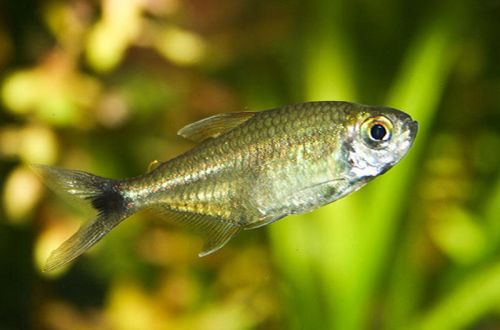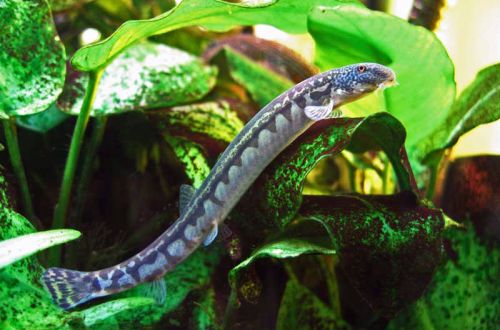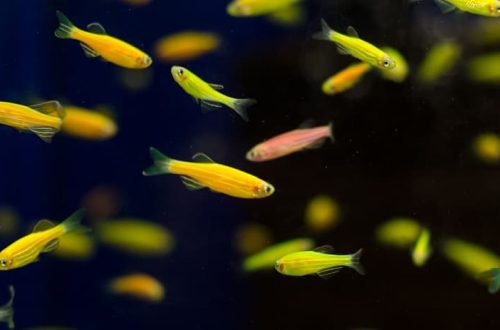
Golden Tetra
The golden tetra, scientific name Hemigrammus rodwayi, belongs to the Characidae family. The fish got its name due to its unusual color, namely, the golden sheen of the scales. In fact, this golden effect is the result of the action of the substance “guanine”, which is in the skin of Tetrs, protecting them from parasites.

Contents
Habitat
They live in South America in Guyana, Suriname, French Guiana and the Amazon. Golden Tetras inhabit river floodplains, as well as coastal areas where fresh and salt water mixes. These fish have been successfully bred in captivity, but for some unknown reason, aquarium-raised fish tend to lose their golden coloration.
Description
A miniature species, reaching a length of no more than 4 cm in a home aquarium. It has a unique scale color – gold. The effect is achieved due to special substances on the body that protect against external parasites. A dark spot is noticeable at the base of the tail. The dorsal and anal fins are golden with a white tip and thin red rays along the fin.
The color of this fish depends on whether it was raised in captivity or caught in its natural habitat. The latter will have a golden color, while those grown in captivity will have a silver color. In Europe and Russia, in most cases, silver tetras are on sale, which have already lost their natural color.
Food
They are omnivores, accepting all types of industrial dry, live or frozen food of suitable size. Feed three times a day in portions that will be eaten within 3-4 minutes, otherwise there is a threat of overeating.
Maintenance and care
The only difficulty lies in the preparation of water with suitable parameters. It should be soft and slightly acidic. Otherwise, it is a very undemanding species. Properly selected equipment will save you from additional troubles, the minimum set should include: a heater, an aerator, a low power lighting system, a filter with a filter element that acidifies the water. To simulate natural conditions, dry leaves (pre-soaked) can be placed on the bottom of the aquarium – this will tint the water to a light brown color. Leaves should be replaced every two weeks, the procedure can be combined with cleaning the aquarium.
In the design, it is recommended to use floating plants, they additionally dim the light. The substrate is made of river sand, at the bottom there are various shelters in the form of snags, grottoes.
Social behavior
The content is flocking, in a group of at least 5–6 individuals. Peaceful and friendly appearance, rather shy, afraid of loud noises or excessive movement outside the tank. As neighbors, small peaceful fish should be selected; they get along well with other Tetras.
Sexual differences
The female is distinguished by a larger build, the males are brighter, more colorful, the anal fin is white.
Breeding / breeding
The Golden Tetra does not belong to devoted parents and may well eat their offspring, therefore a separate aquarium is required for breeding and keeping juveniles. A tank with a volume of 30–40 liters is required. The water is soft and slightly acidic, the temperature is 24–28°C. Of the equipment – a heater and an airlift filter. The lighting is dim, enough of the light that comes from the room. Two components are required in the design – sandy soil and clusters of plants with small leaves.
The inclusion of meat products in the daily diet stimulates spawning. When it will be noticeable that the female’s abdomen has become rounded, then it’s time to move it along with the male to the spawning aquarium. The eggs are attached to the leaves of plants and are fertilized. The parent should definitely be removed back to the community tank.
The fry appear in a day, begin to swim freely already for 3-4 days. Feed with microfeed, brine shrimp.
Diseases
The Golden Tetra is prone to infection with the fungus that causes “Water Sickness”, especially fish caught in the wild. If water quality changes or does not meet the required parameters, an outbreak of diseases is guaranteed. Read more about symptoms and treatments in the Aquarium Fish Diseases section.





